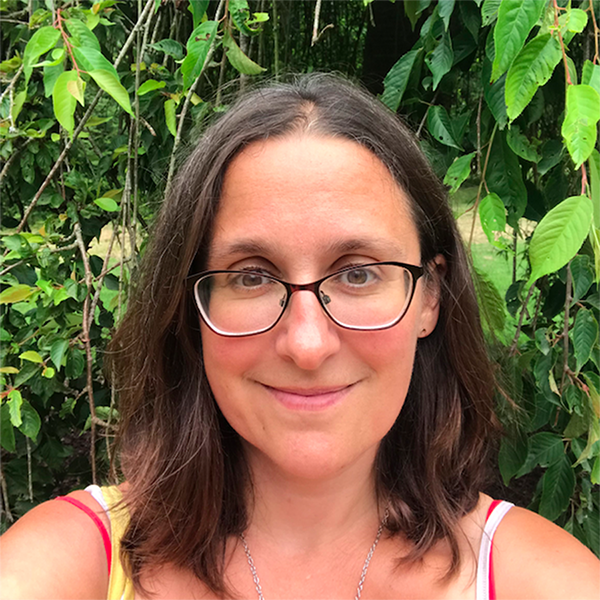Welcome to our new history of fashion blog series, in which we’ll be rummaging through more than a century of styles to inspire today’s stitchers. Skip to the decade you love or curl up with a cuppa and read the lot!
The 1990s
We know vintage is officially cool. From stylists combing eBay for ironic 80s sweaters to stars wearing 50s Dior on the red carpet, it has never been so ‘in’ to wear the fashions of the past.For stitchers, the history of fashion is a treasure trove of inspiration. Plus, unlike your average shopper who has to search for the perfect 40s frock, we can make our own, to fit us, in the colours and fabric we like. We can take inspiration from 1920s beading and add it to our own bag design. In short – we’re time travellers.So, buckle up and come with us as we begin our vintage inspo adventure, starting in the decade many of us can just about remember: the 1990s…The 1990s feel like five minutes ago but they’re back on the style pages and a goldmine of fun fashions, from hip hop styling to rave culture. There’s plenty for grown-up women to wear too (with or without the Spice Girls-style Buffalo trainers…).
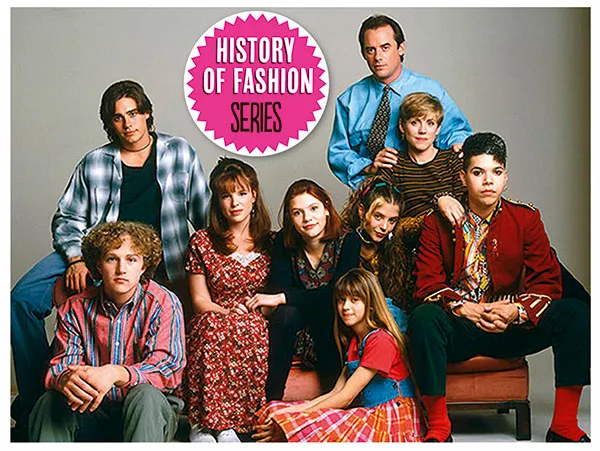
Grunge
First up: grunge. The music of the disenchanted recession generation came with its own philosophy, expressed in the clothes: ripped jeans, functional plaid shirts, thrift store-find dresses and army boots.
Ironically, the anti-consumerist movement became super-fashionable when Nirvana released their mega-hit album Nevermind and in 1992, a young Marc Jacobs dressed the hottest models (including one Naomi Campbell) in couture grunge (including ‘flannel’ shirts made from silk) – outraging pretty much everyone and losing his job in the process. Today the high street is full of grunge style, from torn jeans to pastel hair.
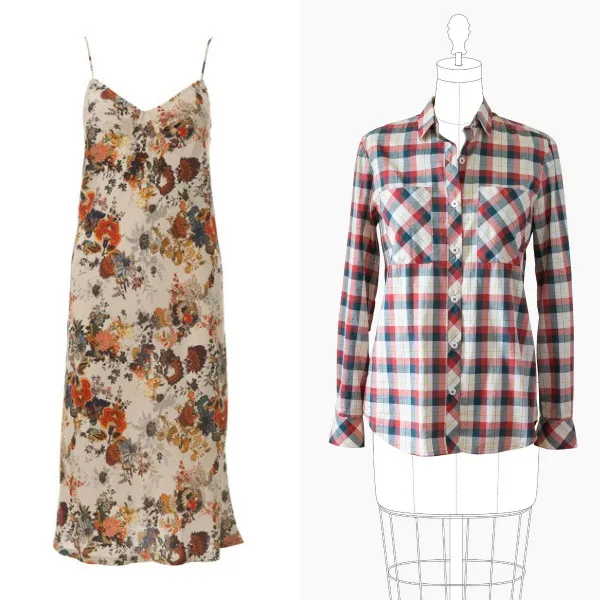
Alt screen stars
Claire Danes may be best known for Homeland and Romeo & Juliet, but in the 90s she was the star of cult teen drama My So-Called Life (pictured above). She was just one of a number of quirky, youthful and rebellious screen stars of the 90s: Liv Tyler in Empire Records, Drew Barrymore in flower crowns, Winona Ryder in everything – even the zany styles of Melissa Joan Hart in Clarissa Explains It All. We’re thinking: layering, waistcoats, dungarees, crop tops, scrunchies, berry lipstick and red hair dye.
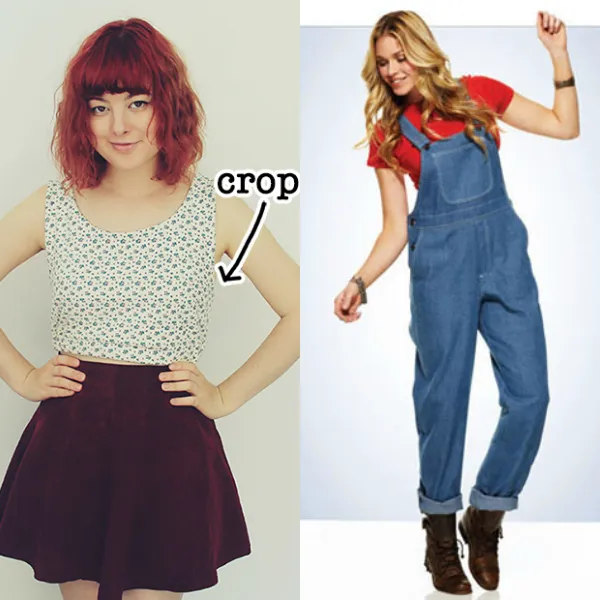
And who could forget that classic 90s hair accessory, the scrunchie? Martha Stewart's scrunchie tutorial is an easy way to add a touch of 90s style if you don’t want to go all out.
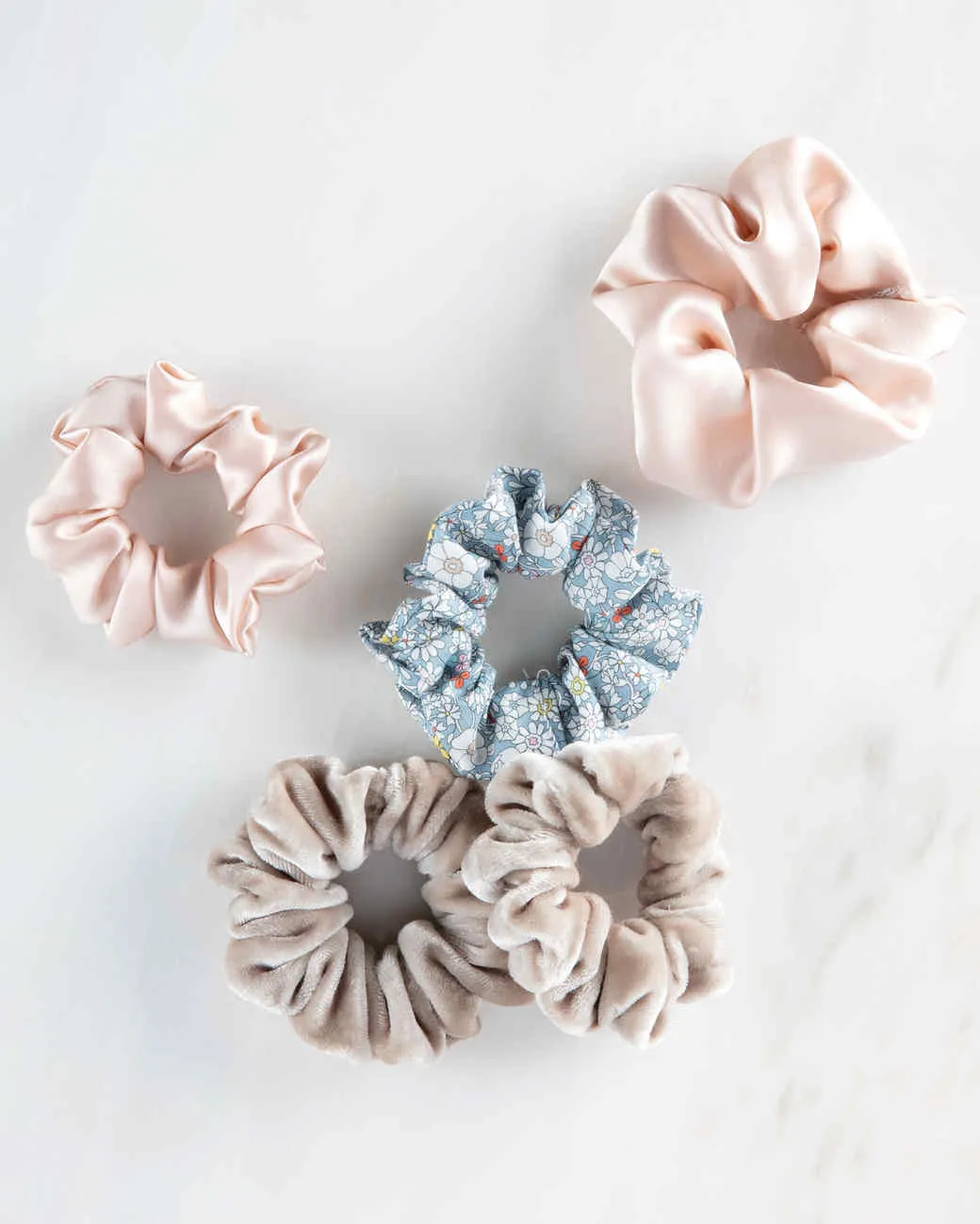
Minimalism
A reaction to the dazzle of the 80s (more on that next time), 1990s mainstream fashion returned to minimalism with simple, pared-down styles in hues of black, white and taupe – silky shoulder-baring dresses, pencil skirts, high-waist tapered trousers. Pair everything with a white shirt, a thumb ring and maybe a spritz of CK One.
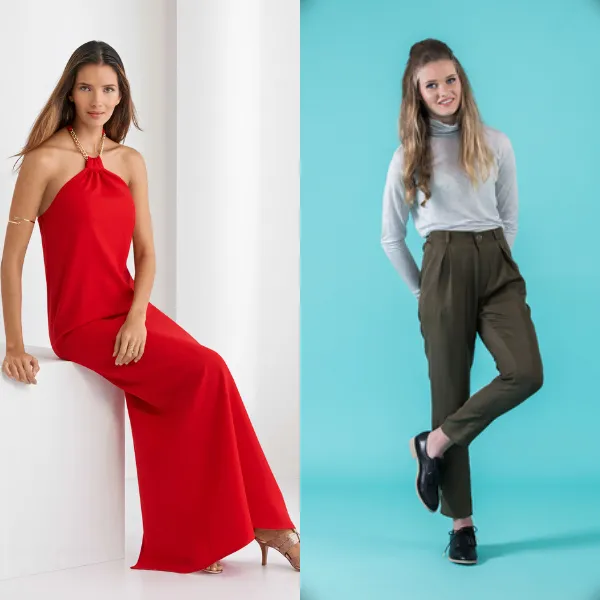
The 1980s
Welcome to the turn of the much-maligned and joyously OTT 80s.Yes, there was a lot of bad stuff going down – shoulder pads, ultra-bright blusher, obnoxious neon prints, leg warmers – but step away from the aerobics mat and there were some influential trends that we’re still inspired by today.
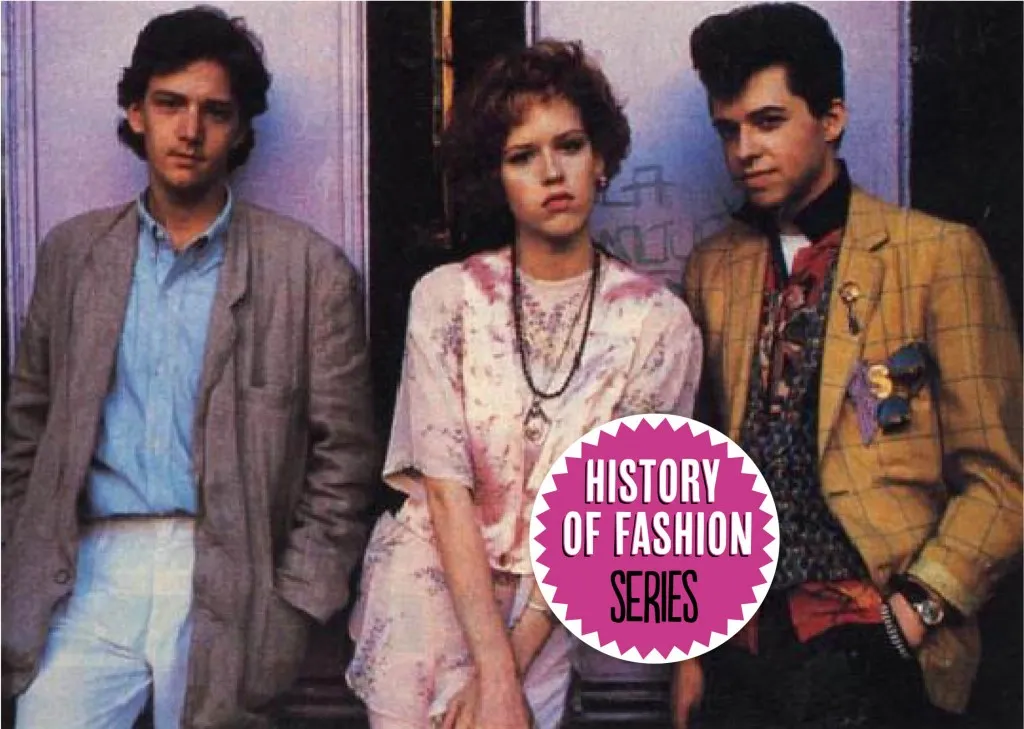
Slogan T-shirts
Proclaiming your allegiances across your chest began with mid-century American sports fans and brands in the 60s and 70s, becoming super-controversial with Vivienne Westwood’s punk tees in the 70s, but in the 80s the slogan T-shirt hit the big time.
Designer Katherine Hamnett wore hers to meet the then prime minister, Margaret Thatcher – and a striking way of spreading a message was born. Via Wham’s ‘Choose Life’ and Frankie Goes to Hollywood’s ‘Relax’ T-shirts, slogan tops became a mainstream way to protest – or simply look cool.
While the passion for declaring your love of brands died a few years ago (remember those FCUK tops?) we say creating your own message is the way to go now.

Goth
One of the most influential style cultures of all time flourished in the 80s. Inextricably linked with music, including Siouxsie and the Banshees, Joy Division, My Bloody Valentine and The Cure, goth emerged from the foggy streets of London with the clothes to match – lots of black, lace, net, corsets, velvet, studs, crucifixes and pentagrams, and even a cape or two.
It was a super-creative time and the goth style has remained, well, undead – think The Craft, The Crow, Twilight, and more recently Rick Owen’s gothic vibe, Illamasqua’s new In Disciple Deep Navy lipstick and this winter’s Dark Victoriana look.

80s style icon: Molly Ringwald
The star of 80s teen classics The Breakfast Club and Pretty in Pink sparked a fashion revolution that we haven’t quite got over.
Spurning the severe and ostentatiously prosperous look of the ‘Greed is Good’ generation (we’re thinking power-dressing suits, gilt buttons, massive hair), Molly had her own quirky style.
She mixed and matched feminine skirts and pirate boots with masculine bowler hats, oversized blazers and houndstooth check. Plus, of course, she took part in any sewist’s favourite cinema moment: the prom dress up cycle in Pretty in Pink.
We would go so far to say that she sparked the trend for vintage – and our 21st-century love for seriously massive spectacles.

The 1970s
Before the big shoulder pads and even bigger hair of the 1980s, there was the eclectic 1970s. As author Tom Wolfe said: “If the hippies had one irrevocable effect on culture, including fashion, it was to destroy every rule except the injunction to please oneself.”This lead to a decade of mismatched styles, from glam, disco and classic, big-haired Americana to the nihilism of punk. The era is making a comeback on the high street, so there’s no better time to add a 1970s vibe to your sewing. We think these styles are pretty far out, man…

Tassels and fringing
In many ways, 1970s fashions were a bit of a bohemian free-for-all rolling on from 1960s flower power (think Joni Mitchell, Janis Joplin and the flowing designs of Thea Porter). Suede, beads and embroidery made their way from catwalk to high street, while we love a bit of fringing and tassel action (check out Kate Moss and Cara Delevingne for Mango).
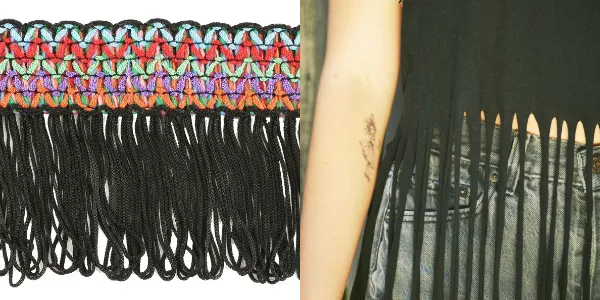
Flares
Bell-bottoms were first worn by sailors in the 19th century, but it wasn’t until the mid-1960s that they became cool (at least for the young and trendy). By the 1970s, everyone from pop stars to newsreaders had a pair of these unisex trousers. Until punk and drainpipes turned up in 1977, a bit of swag was the look. Today, flared jeans have seen a revival – mainly on boho stars like Sienna Miller (and the occasional daring chap).

Stripes
The 1970s was also the decade for graphic stripes. Adidas trainers and sporty knee socks (worn with roller boots) and rainbow stripes were in – think Mork’s braces in Mork & Mindy and Missoni’s famous zigzag knits.
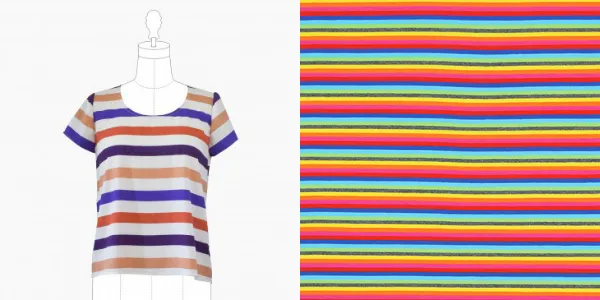
The 1960s
On our journey through the history of style, we’ve stopped by the minimal 1990s, garish 80s and hippy-chic 70s – and now it’s time for us to take a look at one of the most iconic decades for fashion, the 1960s, when Beatlemania was at its peak, skirts were the shortest they’d ever been and the world watched with bated breath to see if man really could land on the moon.
So iconic are the fashions of the 1960s that they never go out of style, so here's how to add a few swinging 60s makes to your handmade wardrobe for instant cool. Groovy, baby!
Keep it smart
It took a long time for the ultra-feminine fashions of the 1950s – corseted underwear, smart suits, hats and gloves and structured dresses – to fade. It wasn’t until the mid-1960s that things got really swinging.
Many women around the world were (and still are) influenced by Jackie Kennedy, with her youthful twist on conservative dressing – especially her signature straight, short-jacketed suits and matching pillbox hats.

Mini skirts
A signifier of the social revolution that swept the Western world, the mini skirt suited a generation of women that was more sexually liberated, confident and powerful.
King’s Road boutique owner Mary Quant and French designer André Courrèges were both credited with raising hemlines, but Mary said: “It wasn’t me or Courrèges who invented the mini skirt anyway – it was the girls in the street who did it.”
The mini skirt’s boom went hand in hand with the US invention of pantyhose in 1959, which allowed women to ditch stockings and suspender belts for easy-to-wear tights.

PVC
Neil Armstrong didn’t land on the moon until 1969, but the whole decade was preoccupied with space travel, which had a strong influence on fashion – think silver, black and white and Op Art patterns. This was also the era of experimenting with man-made fabrics such as nylon and polyester.
Wet-look PVC in crazy colours, and even transparent, suited the futuristic mood and was everywhere, from Diana Rigg’s catsuits in The Avengers to shiny raincoats.

The 1950s
For couture lovers, the 1950s are perhaps the most exciting decade of all. These were the post-war years when people were slowly emerging from deprivation, rationing and uniforms – and many women wanted to enjoy luxury and femininity again, with full skirts and cinched-in waists to create the coveted hourglass shape.That’s not to say there wasn’t room for a bit of rock ‘n’ roll rebellion, though…

All dressed up
Christian Dior, inventor of the wasp-waisted New Look in the late 1940s, declared that clothes were there to “save women from nature”. Designs ranged from figure-hugging drapery to shape-squeezing corsetry. While Coco Chanel continued to argue for ease of dressing for women (and her trademark straight collarless suits), the silhouette was often one of tiny waists, bell-shaped skirts and the essential hat and gloves.
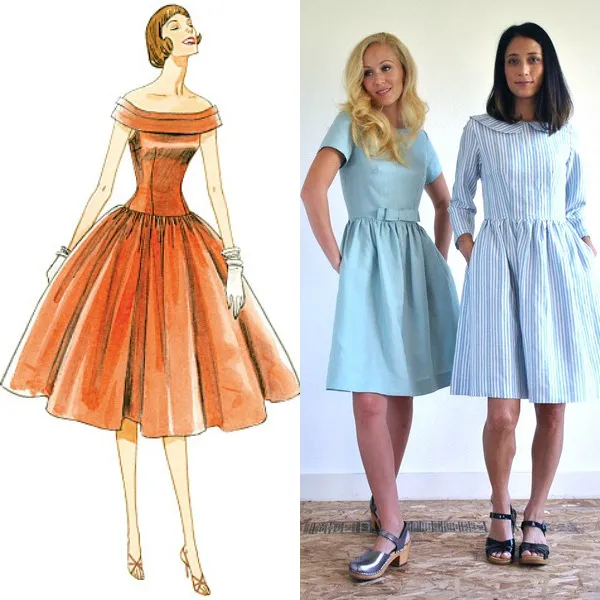
Power blouses
Although the 50s is known as the decade when women were championed as ‘homemakers’, many in fact were heading into the workforce (and returning after marriage) and thus required more professional attire. The blouse (the equivalent of a man’s work shirt) had a resurgence – the 50s blouse had soft shoulders, demure collars and a variety of sleeve shapes, and was worn smartly tucked into a pencil skirt.
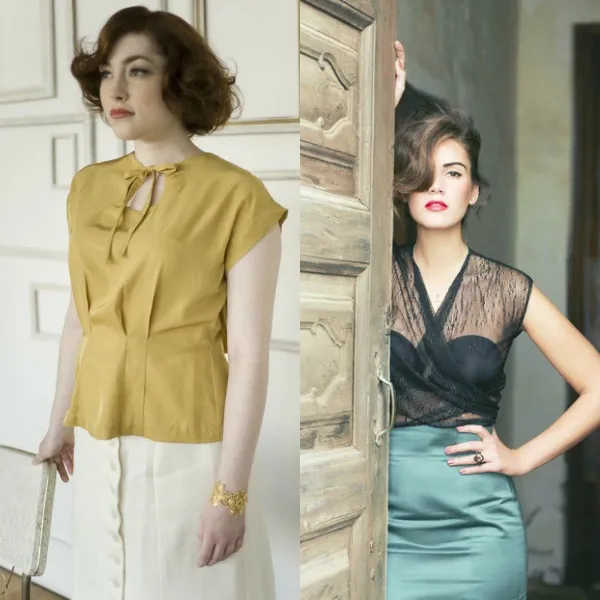
Beats
It wasn’t all suits and structured styles, though – the 1950s was also when rock ‘n’ roll went mainstream and rebellion simmered. The Beats, described by Jack Kerouac as “a generation of crazy, illuminated hipsters”, rebelled in their literature, lifestyles and fashion. Kerouac himself once shocked an audience by wearing black jeans, ankle boots and a checkered shirt – a look we still want to wear today.

The 1940s
We’ve been travelling back in time through some of the fabbest fashions of the past century, and now we’re heading to the war-torn 1940s.Practicality was an essential as women took on ever more challenging roles in the fields and factories, and fashion made way for uniforms, rationing and make-do-and-mend as the Second World War rumbled on. The U.S. National Archives via Foter.com / No known copyright restrictionsBut it was also the era of movie star glamour and swing-dancing sass – whatever they wore, inventive women added style to their outfits with elaborate hairdos, ruby red lips and, of course, a touch of Blitz spirit.
The Little Dress
Clothing shortages and rationing had a big effect on design. Worn by most women across Europe, La Petite Robe, or The Little Dress, saved fabric with its shorter hemline and narrow shape – but it was also pretty, often made with polka dot or print fabrics, while couture versions added embroidery and matching boxy jackets.
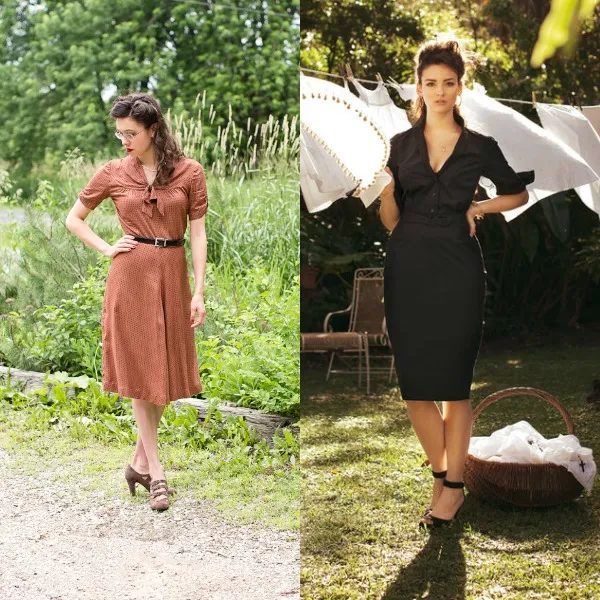
The Siren Suit
The Siren Suit was an all-in-one garment that women would pull on over their nightwear if they had to head down to the air raid shelter on a chilly night. Though they were meant to be warm and functional rather than glam (even if Parisian couturiers offered luxury tailored versions with built-in capes) we think that made with the right fabric they can be rather slinky.
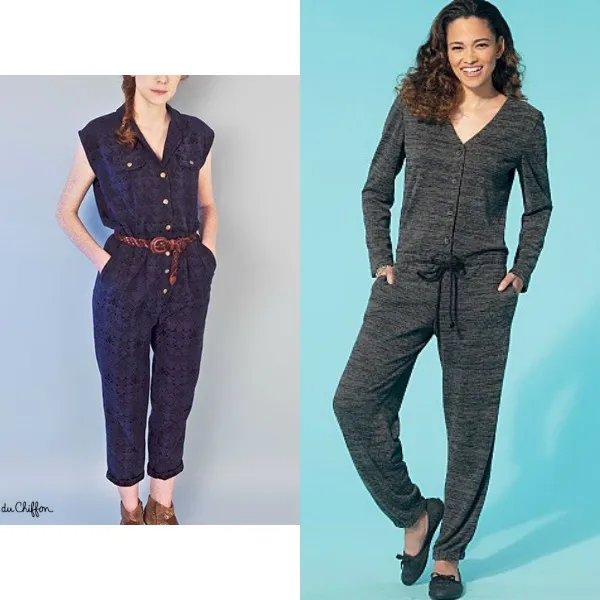
The wide-leg trouser
Since the 1930s, trousers had become ever-more acceptable for women to wear, with movie stars like Katherine Hepburn and Marlene Dietrich donning strides. By the time women were taking over men’s jobs during the war, many of them were in fact literally wearing their husband’s trousers -when these wore out, there was a boom in demand for ladies’ trousers – high-waisted, wide-legged and worn with blouses, knitwear or halter tops for dancing.

The 1930s
The 1930s have sometimes been a bit overlooked in terms of fashion, following the razzle-dazzle of the 1920s and overshadowed by the Wall Street Crash of 1929 and the following Depression. With another war on the horizon too, it’s not hard to think that this decade was all doom and gloom.

But there is plenty of fashion inspiration to take from the 1930s – this was the era when Hollywood started to take over from the couturiers and high glamour was in, with screen stars like Marlene Dietrich, Jean Harlow, Greta Garbo and Joan Crawford upping the style stakes. For day-to-day wear, think cardigans, tea dresses, wide-legged trousers and elegant longer skirts. The flapper gal was all grown up…
Super-slinky
The 1930s is known for the seductive bias cut (think Keira’s emerald green dress in the film Atonement). This is when fabric is cut diagonally rather than along the cross or straight grain, resulting in garments that drape easily and cling to the body.
Couturier Madame Vionnet was known as “queen of the bias cut” with her gowns influenced by ancient Greek costume. Hollywood gobbled up the trend too, wrapping its stars in sinuous full-length gowns – often halterneck, backless, and lacking in noisy ornamentation: which meant they would be ‘silent’ during filming.

Neck-and-neck
Necklines got super pretty in the 1930s – we’re talking mandarin collars, boat necks, square necks and deep V-necks for evening (sometimes with a false vest underneath for modesty). Extra interest was added with corsages of fabric flowers, ruffles, bows, pleats, scallops, collars, ties and embellishments. If you couldn’t afford a new dress, it was easy enough to switch up the detailing (while waists stayed slim and shoulders grew ever wider during the decade).
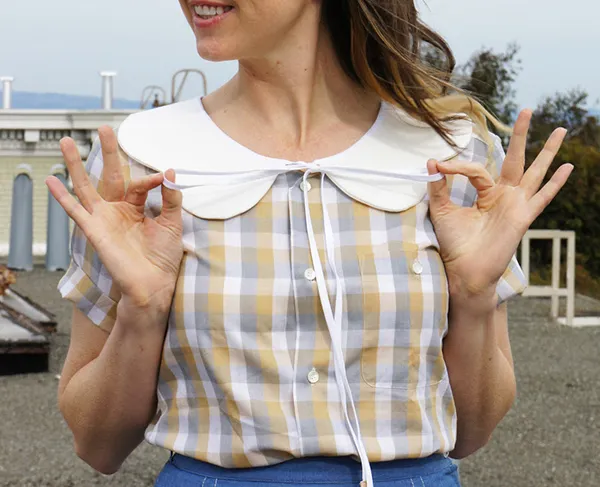
Button up
Gals in the 1930s were nuts about buttons – especially novelty buttons made from bakelite or a polymer called catalin. The fashion for button-up frocks, jackets and blouses meant it was easy for home dressmakers to spruce up their look in a jiffy. Buttons were sold in themed sets, sometimes with matching belt buckles – in every shape from swirls, birds and flowers to rows of vegetables, Disney characters and – a big fave- Scottie dogs. Designer Elsa Schiaparelli was known for adding a Surrealist touch with huge hand-painted buttons shaped like pianos, mermaids and acrobats made from metal and enamel.

The 1920s
Hurrah, it’s time for us to head back to the 1920s – one of our all-time favourite decades for style. We’re thinking The Great Gatsby, we’re thinking Boardwalk Empire, we’re thinking Downton Abbey season five.
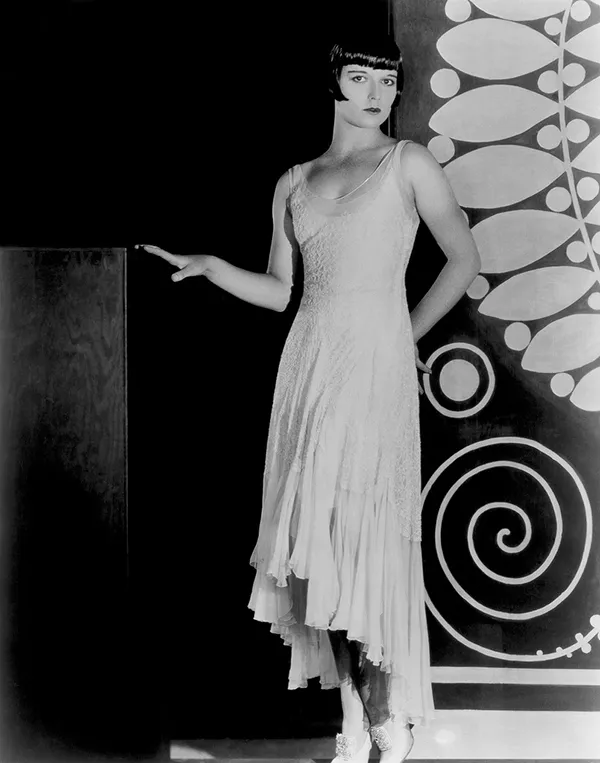
Famously, these were the years when young people danced away the horrors of the First World War, and women especially enjoyed new freedoms – which were reflected in the Flapper fashions for bobbed hair, raised hemlines and even a cocktail (or three).
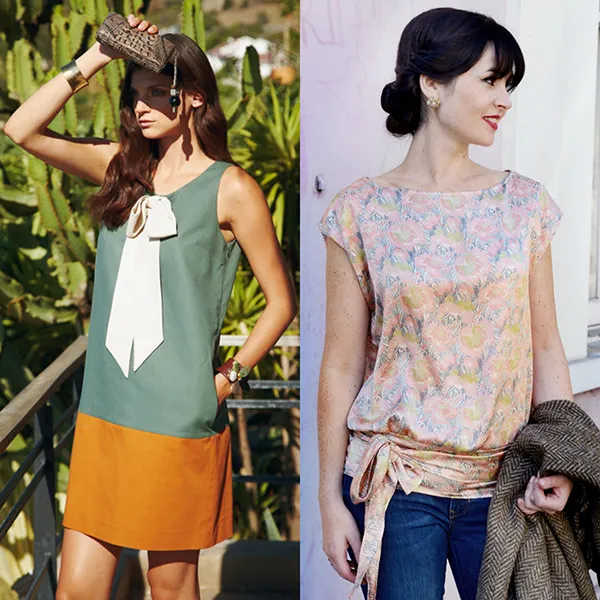
Get the silhouette
By 1920, women’s fashion was already beginning to change forever from the restrictive skirts and corsets of the past. The free, young Western woman of the Roaring Twenties needed a dress to go with her more liberated lifestyle – Chanel, Lanvin and Patou were among the designers championing simple, straight styles with shorter skirts, dropped waists and flat bodices, influenced by the popular passion for sport.
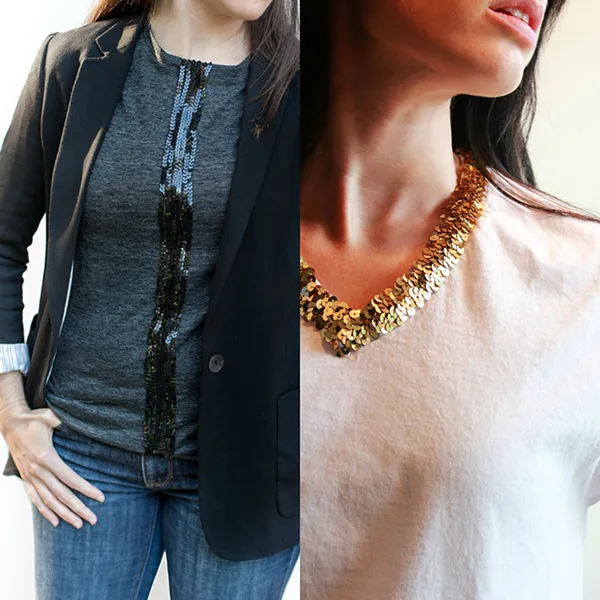
The need for bead
The popular straight, flat silhouette meant every woman wearing it became a walking canvas for designers to get busy – especially when it came to couture. Intricate beading was used to decorate these simple shapes – with trends varying from Art Deco zigzags to layers of fringing which added extra sparkle and movement: perfect for doing the Charleston in!
Gold digger
In 1923, Tutankhamun’s tomb was discovered, sparking a hysteria for all things Egypt – this meant patterns and prints influenced by hieroglyphics, ankhs, scarabs and lotus flowers. It also inspired acres of shimmering embroidery and a passion for gold and silver – especially lame fabrics for eveningwear.

The 1910s
The 1910s was a dynamic era for fashion, with plenty to inspire the modern-day maker. Things were changing rapidly, with women’s fight for the vote, the early days of modernism in art – and, of course, the looming First World War, which was to change society forever.
Seeking new freedoms (and entering the workplace in huge numbers), women began to wear ever more practical clothes: skirts were no longer trailing along the floor, corsets were on their way out and the Jazz Age was just around the corner…
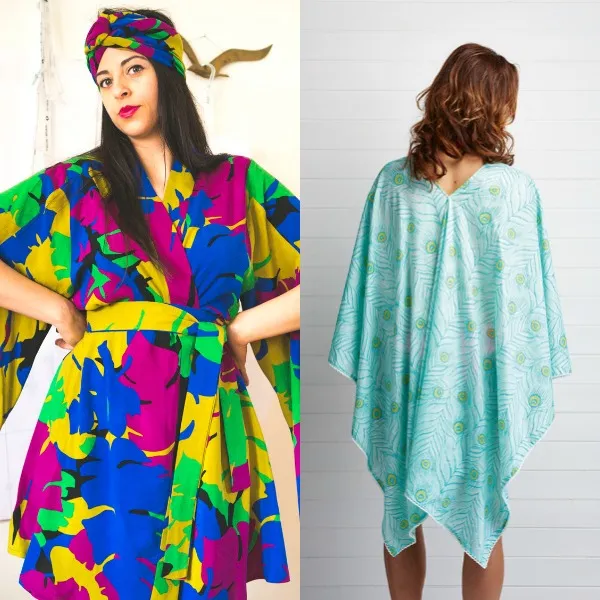
Wrap stars
110 years ago, Sergei Diaghilev’s Ballet Russes premiered Shehezerade – a ballet which had a massive influence on contemporary fashion, albiet more for couture and evening gowns than everyday wear. Designed by Leon Bakst, the costumes were a riot of lush colours and flowing, wrapped fabrics inspired by the exotic East.
The modern trend for kimono tops could be traced back to Bakst’s beautiful designs – we’re thinking bold prints, wide sleeves and wild colours such as violet, orange, peacock blue, gold and yellow.
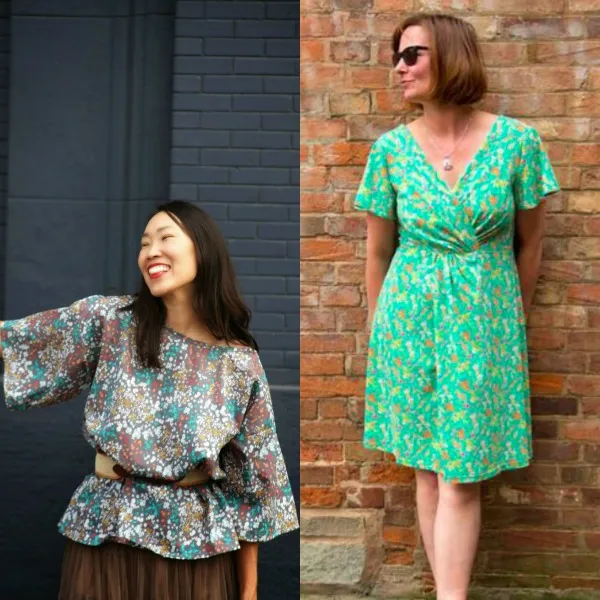
Tune in
The strict, corseted style of the Edwardian era was fading away thanks to visionary designers such as Poiret and Chanel. Along with the craze for hobble skirts, this brought a boom in more practical and wearable styles for women who were taking over men’s roles in the worksplace – wider, shorter skirts, durable tweed and wool and shades of khaki, grey, brown and dark blue.
Also popular was the tunic – a T-shaped, flat garment with roots in the Middle Ages. Worn over skirts or even harem trousers, the comfortable, stylish tunic soon became a dress in its own right.

Trench coat
As can be guessed by the name, the trench coat really came into its own during the First World War – an invention from the turn of the century made from the new waterproof gaberdine, the coat’s iconic features include a double-breasted front, wide lapels, belt and shoulder straps. Originally worn only by officers, the trench coat became a symbol of patriotic pride and has influenced both men’s and women’s fashion ever since.
The 1900s

If you’ve made it this far, then you’ve followed fashion history from the 1990s all the way back to 1900! It’s been quite a journey, hasn’t it?
After 63 years, the age of Victoria was about to end and the wheels of fashion were slowly turning to reflect women’s changing lives. You might not guess it at first glance, though – Paris and haute couture ruled, and women (of the middle and upper classes, at least) were still changing dress several times a day, their bodies shaped by the fashionable S-bend corset, which paired a tiny waist with a squashed-together ‘pigeon’ bust.Yet over the decade the silhouette became straighter and slimmer, thanks to designers like Paul Poiret and even the avant-garde dancer Isadora Duncan, who scandalised the world with her sheath dresses.
Ssshiffon
At the beginning of the 1900s, upper-class women’s dresses were extremely elegant, made of chiffon, net and silk in shades of the palest pink, yellow, blue and white. Things got even rufflier towards the end of the day when they were permitted to ditch the corsets for lavishly lacy tea gowns.
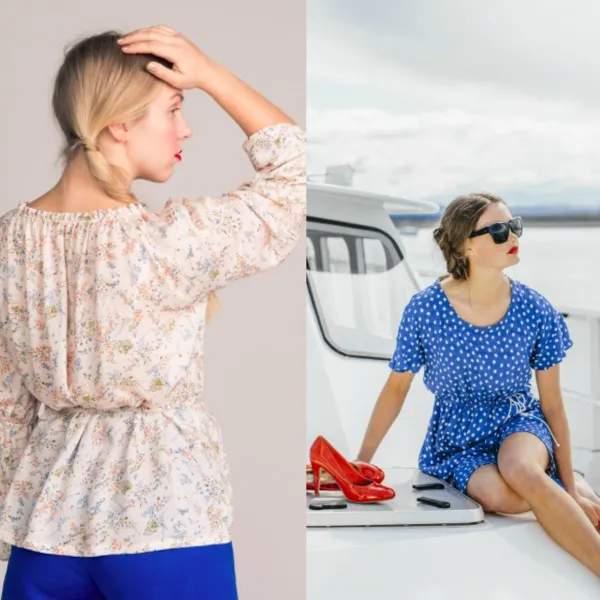
Button up
Women were beginning to enter the professional workforce (and the braver ones were zipping around on bicycles) and that called for a smart, practical and distinctly more masculine look, including collared shirts and ties and tailored jackets.

Sew the look: A jacket is a real investment make, and looks equally lovely with a nipped-in waist or casual with jeans. We love this glam lurex version of New Look 6321 from Erica, and this swag jacket from Guthrie Gahni in a rather Edwardian tweed.
Hello, sailor!
Our love for the Breton stripe could have its roots in the Edwardian passion for nautical fashion, from children’s sailor suits to voluminous swimwear.
The look had already began to edge into women’s fashion – sailor collars and blue-and-white stripes were en vogue – topped with a saucy straw sailor hat, of course.
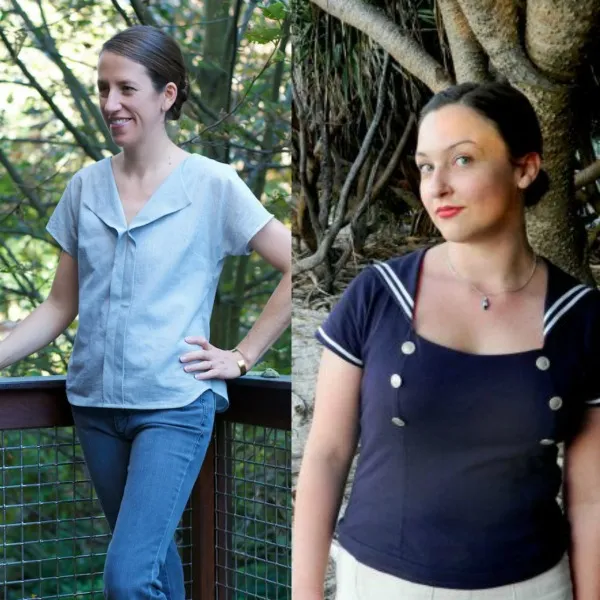
Katie Allen is a writer, content editor and crafter based in London. She is the author of craft book Just Sew Stories and also runs ethical clothing business Plum. She loves reading, writing and all things kitty. Follow her at @KatieFQ.
